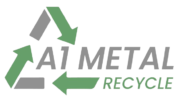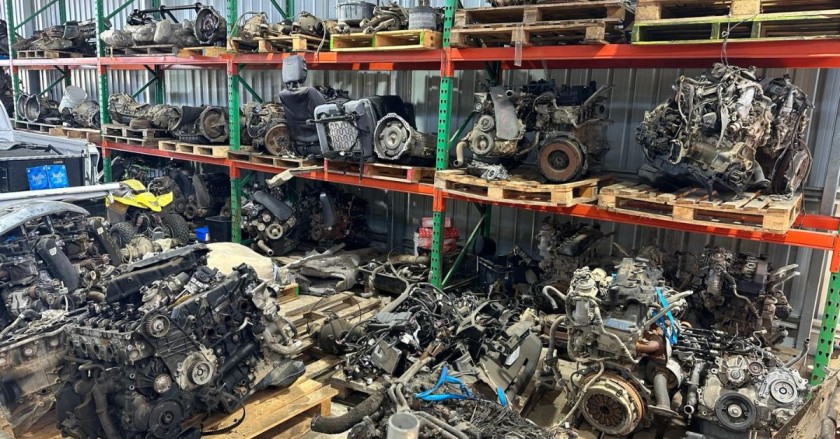Copper is one of the most valuable and widely recycled metals in the world, and its scrap plays a critical role in everything from industrial production to environmental sustainability. Whether you’re in the recycling business, working in construction, or simply curious about how metals shape our world, copper scrap has a story to tell. From ancient usage to modern green technologies, here are 7 fascinating facts about copper scrap that might surprise you.
1. Copper is Infinitely Recyclable Without Losing Quality
One of the most compelling facts about copper scrap is that it can be recycled indefinitely without any loss in performance or purity. Unlike many other materials that degrade each time they are processed, copper retains its chemical and physical properties no matter how many times it is recycled. That means the copper wiring in your home or the plumbing in your office could have once been part of ancient coins, old appliances, or industrial machinery from decades ago.
Why it matters: This makes copper an essential material for sustainable development. It can be repurposed again and again, reducing the need for mining virgin ore and lowering environmental impact.
2. Copper Scrap Accounts for Over 30% of Global Copper Usage
Globally, more than 30% of the copper used each year comes from recycled scrap, and in some regions, this figure is much higher. In developed countries like the United States and Germany, recycled copper often meets 50% or more of domestic demand.
Two main types of copper scrap:
- #1 Copper (bare bright wire): Clean, unalloyed, uncoated copper, typically used in electrical wiring.
- #2 Copper: Includes tarnished, painted, or soldered copper, often from plumbing and other equipment.
Impact: This robust recycling loop helps keep copper prices stable and supply chains resilient.
3. Recycling Copper Saves Up to 85% of the Energy Used in Primary Production
Producing copper from raw ore is incredibly energy-intensive. By contrast, recycling copper scrap requires just 10–15% of the energy needed for primary smelting and refining.
For example:
- Primary copper production: High energy costs, greenhouse gas emissions, and mining waste.
- Recycled copper: Far less energy consumption, dramatically reduced emissions, and lower overall cost.
Environmental benefit: For every ton of copper recycled, you can save over 3,000 pounds of carbon dioxide emissions, making copper recycling a powerful tool in the fight against climate change.
4. The Copper Scrap Industry Supports a Multibillion-Dollar Global Economy
Copper scrap is not just an environmental asset—it’s big business. The copper recycling industry generates tens of billions of dollars globally each year, supporting thousands of jobs in collection, sorting, smelting, and resale.
Major players:
- China: One of the largest importers of copper scrap for manufacturing and electronics.
- United States: One of the top exporters of high-grade copper scrap.
- Europe: Highly organised systems for copper recovery and recycling.
The price of copper scrap in Australia fluctuates with global copper markets, which makes it an active and dynamic commodity for investors and recyclers alike.
5. Copper Theft Is a Real Problem—Because Scrap Has High Value
Because of its high resale value, copper is frequently stolen from construction sites, utilities, and abandoned buildings. In some regions, organised copper theft has caused widespread power outages, disrupted rail services, and even led to dangerous accidents.
Why?
- High value: Scrap copper can fetch $8 to 10$ per kg, depending on purity and market prices.
- Easy to remove: Pipes, cables, and wires are often easily accessible and simple to strip for scrap.
Prevention: Many industries now use copper substitutes or embed security devices to deter theft, while laws have been strengthened to regulate scrap metal transactions.
6. Even Small Copper Scrap Pieces Add Up
Don’t underestimate the power of a small copper wire or an old pipe! Millions of pounds of copper scrap are recovered every year from everyday sources:
- Old appliances
- Electronics (e-waste)
- Plumbing and HVAC systems
- Automobiles
For example:
- An old desktop computer may contain up to 0.5 pounds of copper.
- A mid-sized car may contain between 40–50 pounds of copper, most of which is recyclable.
This makes copper one of the most common (and valuable) metals found in household and industrial waste.
7. Copper Scrap Is Crucial for the Green Energy Transition
As the world pivots toward clean energy, copper has emerged as a key element in renewable technologies—from electric vehicles to wind turbines and solar panels. And much of the copper used in these systems comes from recycled scrap.
Why copper is essential:
- Excellent electrical conductivity
- Resistance to corrosion
- High thermal performance
Electric vehicles (EVs), for instance, use three to four times more copper than gasoline-powered vehicles. Wind and solar farms require vast quantities of copper wiring and cabling. Relying on copper scrap ensures that this green transition is economically and environmentally sustainable.
Final Thoughts: The Hidden Power of Copper Scrap
From its endless recyclability to its pivotal role in modern technology, copper scrap is much more than just metal waste—it’s an economic asset and an environmental champion. Whether you’re a business owner, environmentalist, or just curious about sustainability, understanding the value and versatility of copper scrap helps paint a fuller picture of how we can build a more circular economy.
So next time you see a tangle of old wire or a worn-out copper pipe, don’t toss it—just sell it to a scrap metal dealer.



